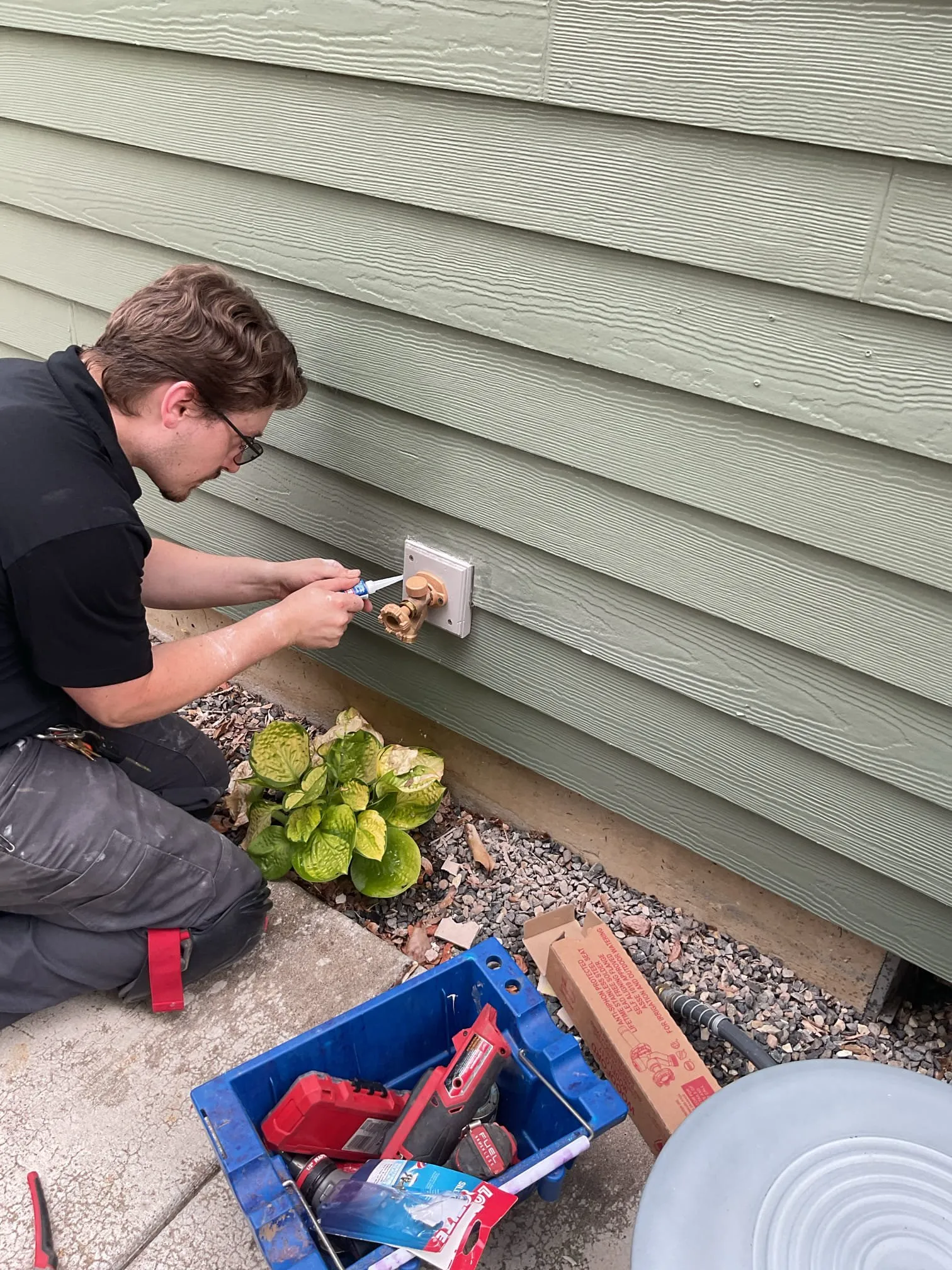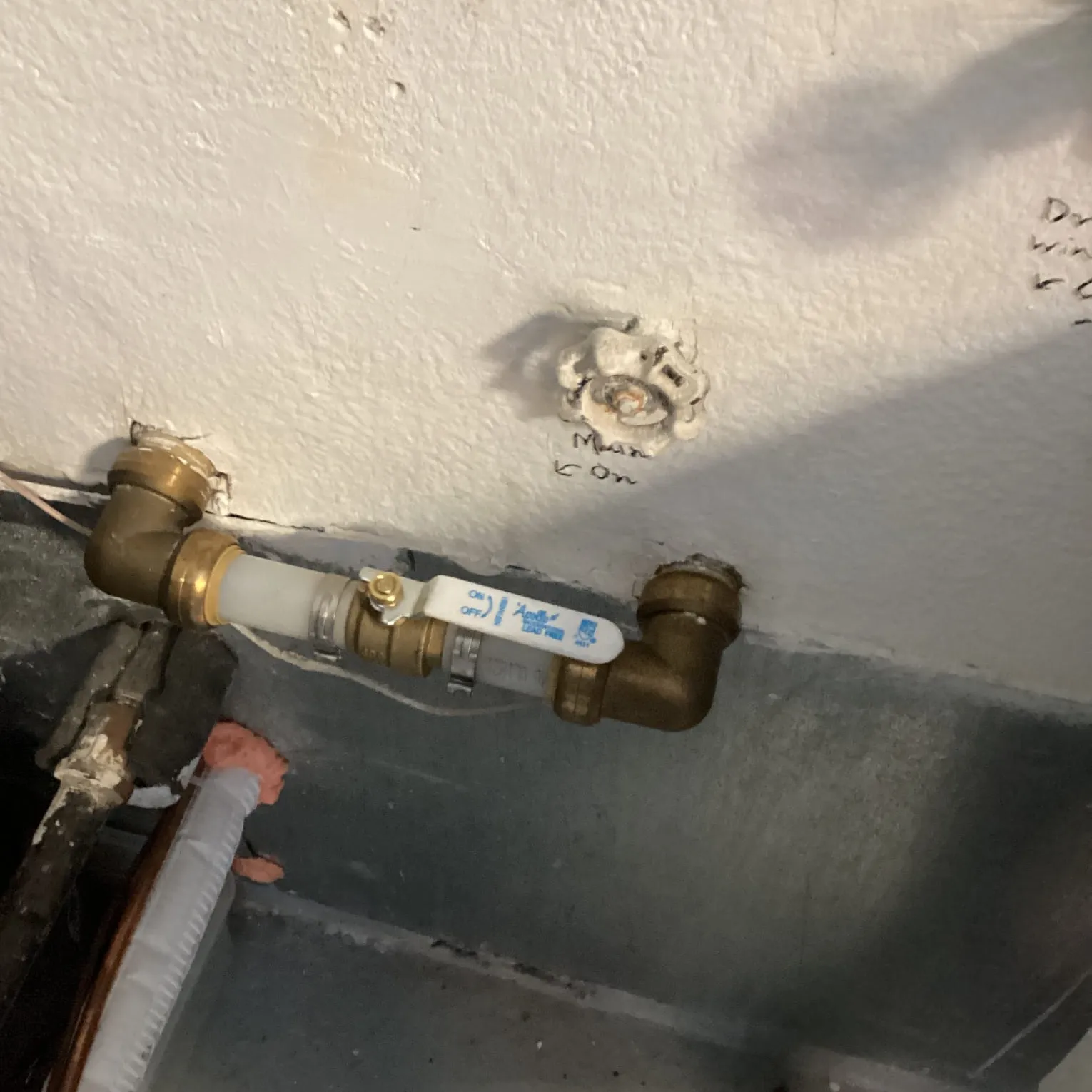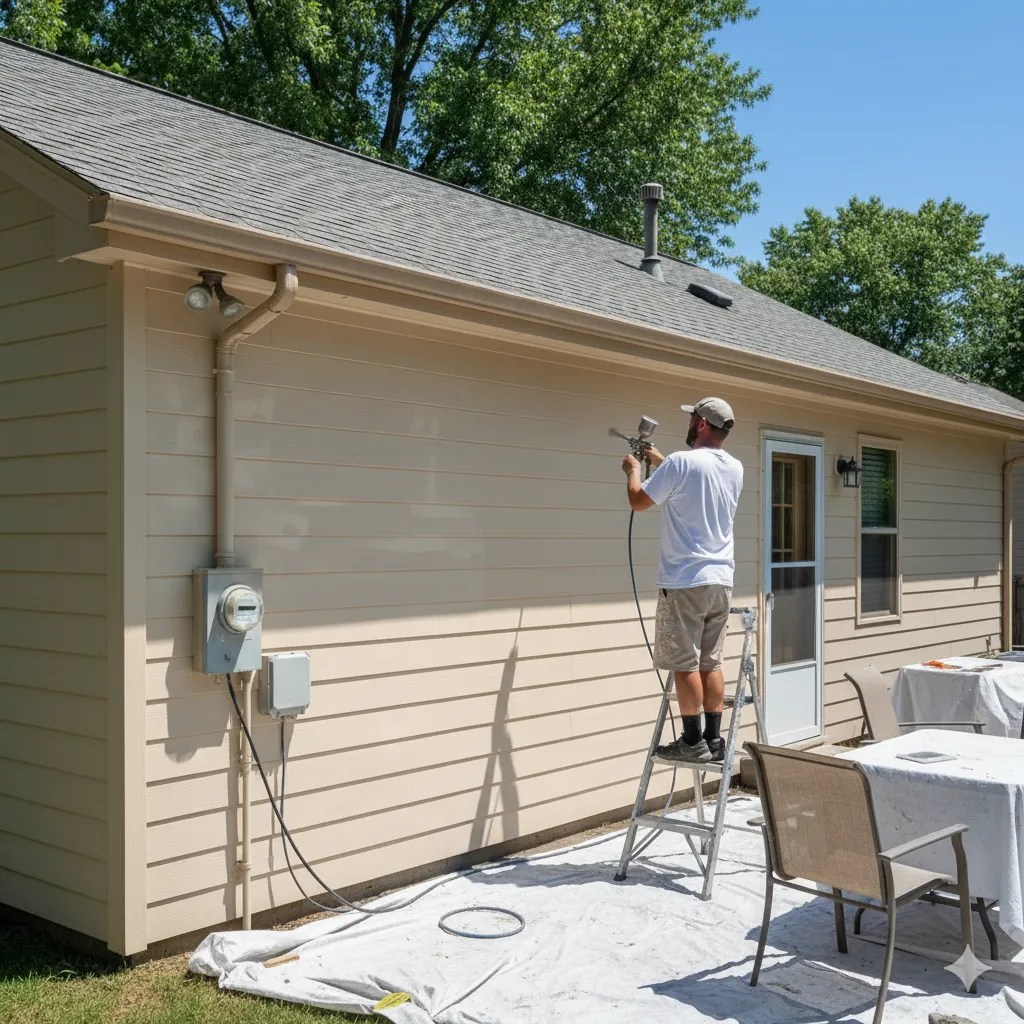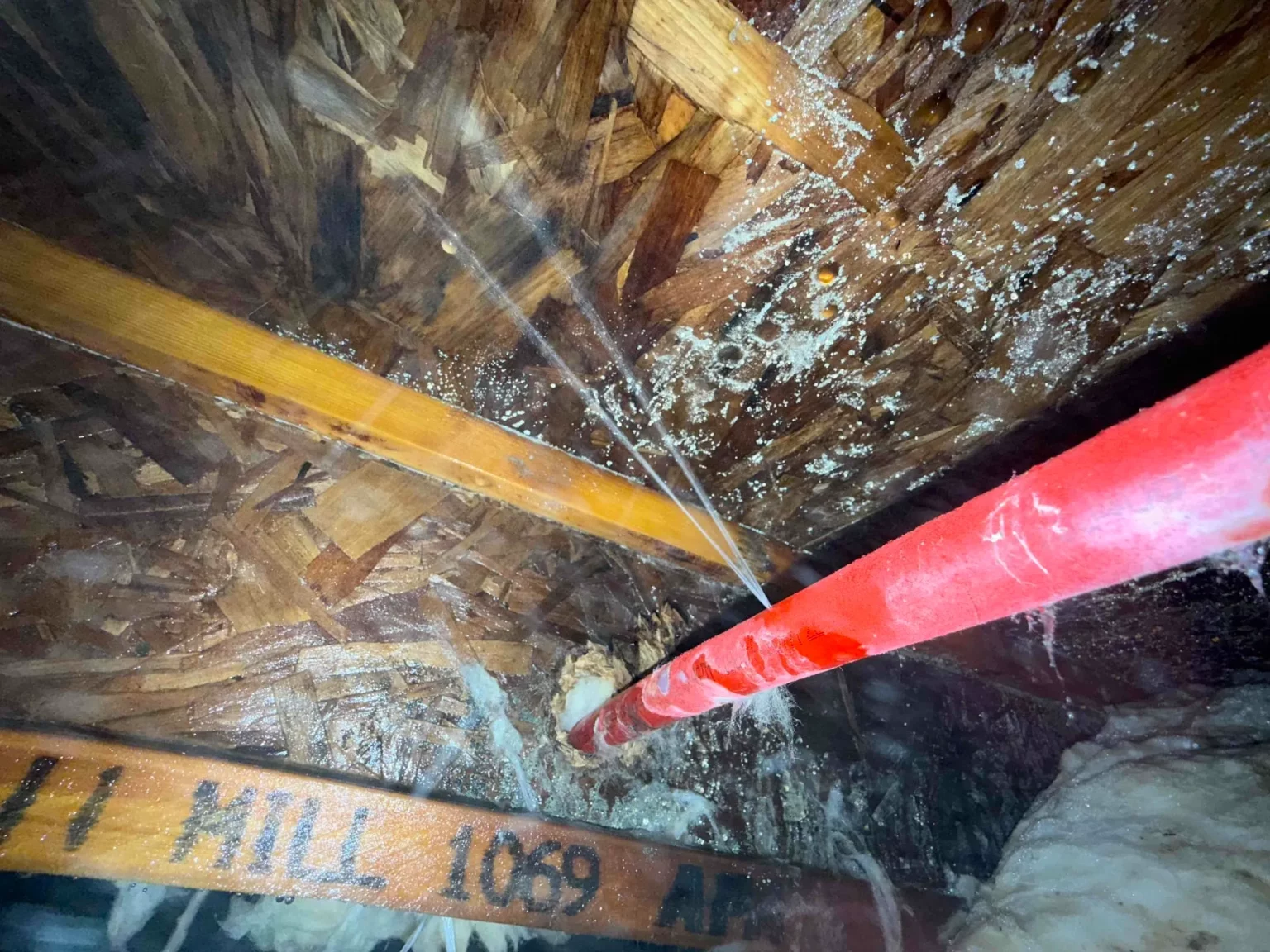

Plumbing leaks originating inside your walls are a significant concern for homeowners in Portland, OR, as they pose a direct threat to your home’s exterior integrity. When a pipe leaks, water saturates the wall cavity, including insulation and structural supports, and eventually reaches the back of your exterior siding. This trapped moisture causes paint to blister and peel, siding to warp or rot, and can lead to significant structural problems if not addressed. The initial signs are often subtle, but delaying repairs allows moisture to cause progressively worse, more expensive damage.
This guide offers the crucial information needed to recognize the signs of plumbing-related exterior damage, understand the necessary repair steps, and prevent future issues. Professional exterior house painters in Portland frequently encounter damage caused by hidden leaks, and their experience shows that addressing the root cause is critical before any cosmetic fix. Addressing a hidden leak is not just a cosmetic fix; it is an essential part of maintaining a home’s structural health and value.
Water from a leaking pipe follows the path of least resistance, moving downward and outward through wall materials. This moisture becomes trapped between the interior wall and the exterior siding, creating a perfect environment for decay. The results are often mistaken for normal wear and tear, but they point to a more serious underlying problem.
One of the most common signs of a hidden leak is paint failure on an exterior wall. Moisture penetrating the siding from behind pushes the paint away from the surface, creating bubbles, blisters, or widespread peeling. An analysis by the Purdue University Extension explains that moisture is a primary cause of such paint failures, pushing the paint film from the substrate. Unlike paint failure from sun exposure, this type of damage is often localized to a specific area and may feel soft or damp to the touch.
Different siding materials react to moisture in distinct ways. Each presents unique signs that a hidden plumbing issue may be the cause of the damage.
Trapped moisture creates an ideal breeding ground for mold and mildew, which can appear as black, green, or brown spots on your siding. This biological growth is a definite sign of a persistent water problem that needs immediate attention, as mold can begin to grow within 24 to 48 hours of a water leak starting.

Homeowners in Portland, OR, can spot hidden leaks by carefully observing exterior changes. Pinpointing a hidden leak requires careful observation. While a sudden spike in your water bill is a strong clue, exterior visual signs can help you narrow down the location. Walk around your property and look for these specific indicators:
Bonus Tip: Use a non-invasive moisture meter to check suspected areas. This tool can detect elevated moisture levels behind the siding without the need to drill holes, helping confirm the presence of a leak before any deconstruction begins.
In a moisture-rich climate like Portland, OR, siding materials react differently when exposed to plumbing leaks. The severity and type of a plumbing leak will affect exterior materials differently. A slow, persistent drip often leads to more rot and decay over time, while a sudden burst can cause immediate, widespread saturation.
| Siding Material | Impact of a Slow, Persistent Leak | Impact of a Sudden Pipe Burst |
|---|---|---|
| Wood Siding | Leads to wood rot, paint peeling, dark stains, and attracts wood-destroying insects. | Causes rapid saturation, significant warping, and potential structural damage to the wall sheathing. |
| Vinyl Siding | Water becomes trapped behind panels, promoting mold growth and rotting the sheathing and fasteners. | Can force panels to bulge or detach as water pressure accumulates behind them. |
| Brick/Stucco | Results in efflorescence, crumbling mortar, and persistent dark, damp spots on the surface. | May cause interior flooding and pressure that can crack stucco or foundational mortar joints. |
Before beginning any repair work, it is important to develop a clear plan. Addressing only the cosmetic damage without fixing the underlying plumbing issue will in the problem quickly returning.
The visible damage on the outside is often just a fraction of the total problem. Once the affected siding is removed, it is common to find rotted sheathing, damp insulation, and even compromised structural framing. A thorough inspection is necessary to understand the complete scope of the required repairs. According to the Insurance Information Institute, water damage is a frequent issue, with about 1 in 60 insured homes filing a claim for water or freezing damage each year.
No exterior repairs should begin until a qualified plumber has located and permanently fixed the source of the leak. Bypassing this step is the most common mistake homeowners make. With professional plumbing solutions, experts can use tools like infrared cameras or listening discs to pinpoint the leak with minimal disruption.
If the leak is due to old or corroded pipes, it may be a sign that other parts of your plumbing system are also at risk. In such cases, it may be more cost-effective to consider a more extensive plumbing update. Likewise, if the siding is old or already in poor condition, it might be a better long-term investment to replace the entire section rather than attempting a patch repair.
Bonus Tip: Review your homeowner’s insurance policy before starting work. While damage from gradual leaks is often not covered, sudden and accidental events like a burst pipe may be. Understanding your coverage can help manage unexpected costs.

Once the plumbing issue is resolved, the exterior can be properly repaired. Following a methodical process is key to ensuring a durable and visually appealing result. Reputable home improvement resources like This Old House provide detailed guides on the correct sequence for repairing water-damaged siding to ensure a durable outcome.
Leaks from water supply lines for kitchens and bathrooms located along exterior walls are a very common cause. These pipes are under constant pressure, so even a pinhole leak can release a significant amount of water over time.
No. Painting over a water stain without addressing the moisture source is a temporary and ineffective fix. It traps moisture inside the siding, accelerating rot and causing the new paint to fail quickly. The underlying leak and all damaged materials must be repaired first.
Stains from a plumbing leak are typically found lower on a wall and are not always dependent on the weather. They may remain damp even during dry periods. Stains from a roof or gutter issue usually appear higher up, often starting just below the roofline, and will worsen after it rains.
Homes with older plumbing systems, particularly those with galvanized steel or polybutylene pipes, are at a higher risk. Additionally, homes in regions with severe freeze-thaw cycles are more prone to pipe bursts if the plumbing is not properly insulated.


